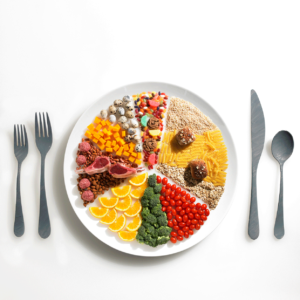 | Excellent combination
|
 | Good combination
|
 | Bad combination
|
It is best to eat the fruit alone, on an empty stomach, at least 30 minutes before eating other foods or 3 hours after meals.
Oils and fats derived from plants and fish are rich in polyunsaturated fatty acids that are essential for good health. The best are ocean fish, flaxseed, pumpkin, sesame, safflower, and sunflower seed oils. These oils are good with vegetables. Carbohydrates can also accompany these oils in certain sauces.
Non-starchy vegetables such as artichokes, asparagus, peppers, beets, broccoli, Brussels sprouts, cabbage, cauliflower, celery, Swiss chard, cucumber, dandelion, eggplant, garlic, green beans, kale, cabbage turnip, leeks, lettuce, mushrooms, okra, onion, parsley, radish, radicchio, spinach, sprouts, squash, parsnips, watercress and zucchini go well with almost anything.
Notes:
The vast majority of your diet (50%-60%) should include vegetables and fruits with high water content as these are able to provide the body with quick energy, nutrients, water, fiber and alkaline mineral salts that help our body cleanse and detoxify. The rest of the diet, about 40% should include grains, cereals, beans, peas, lentils, nuts, ocean fish, chicken raised without antibiotics, dairy products with live culture, low fat and low fat red meats (if you want to include them in your diet).

